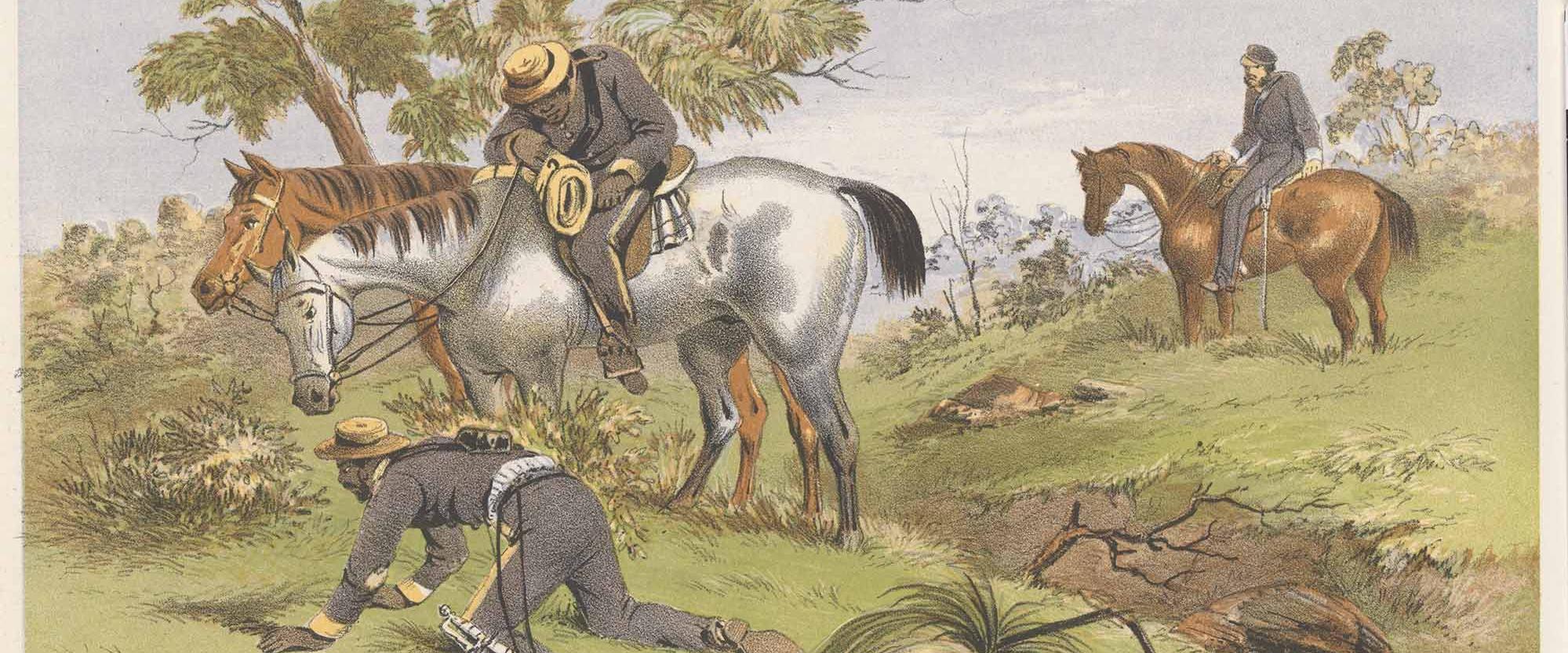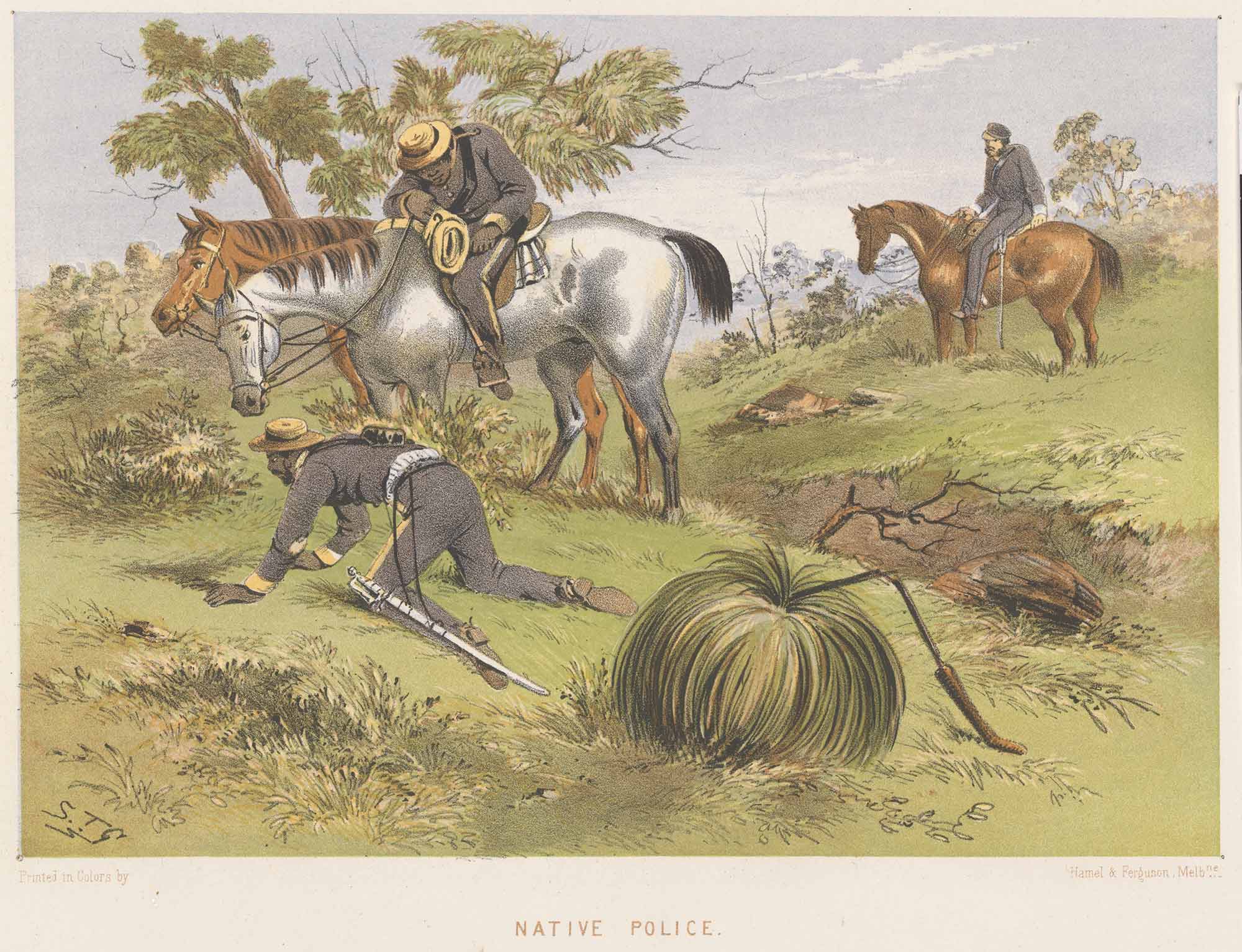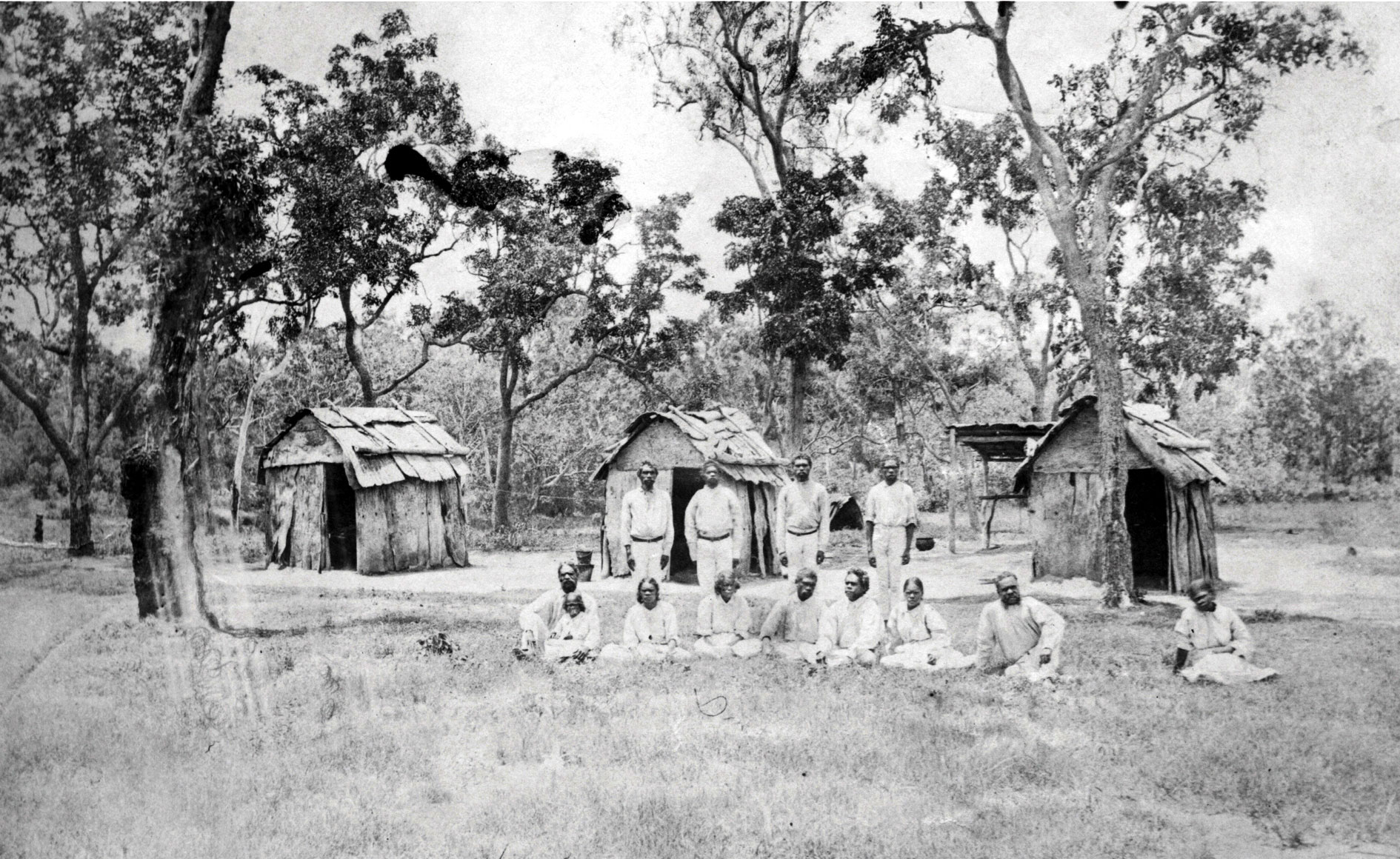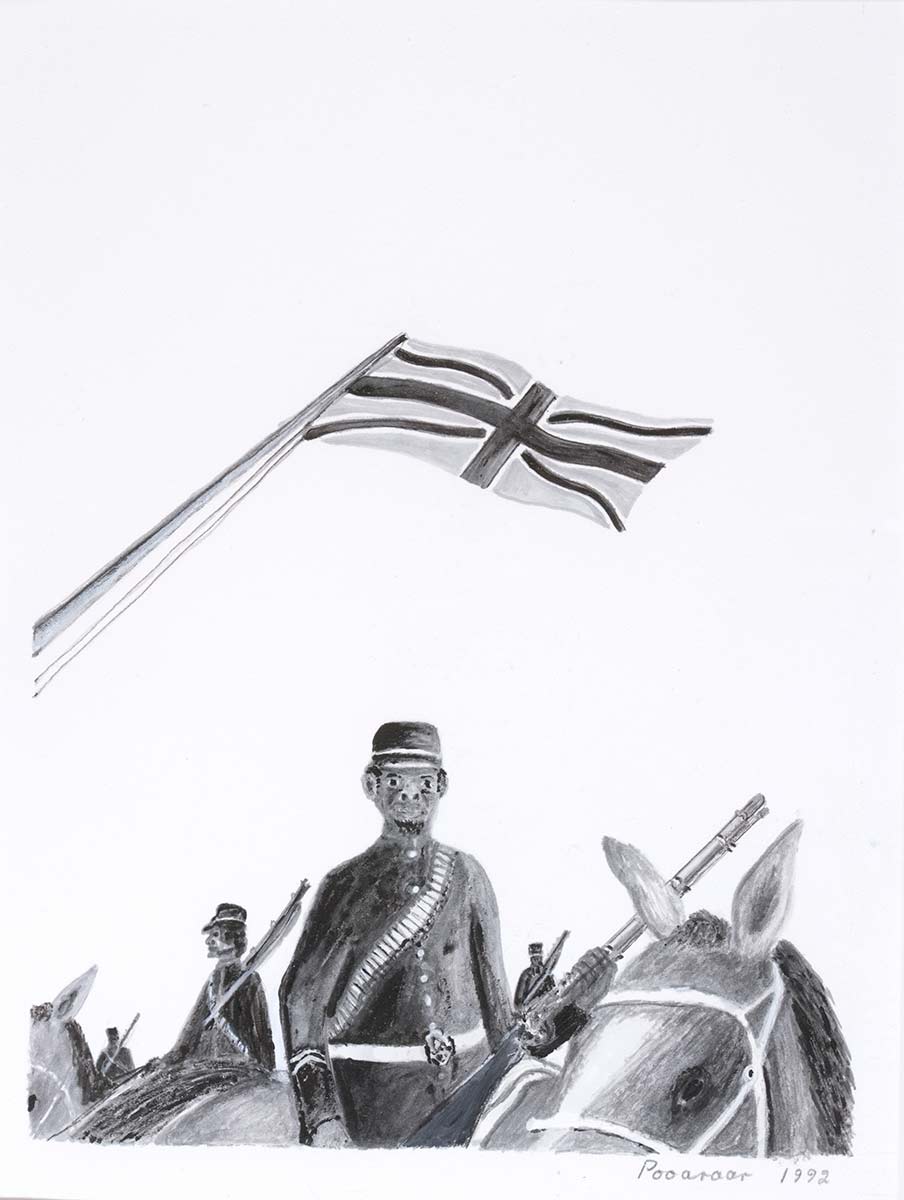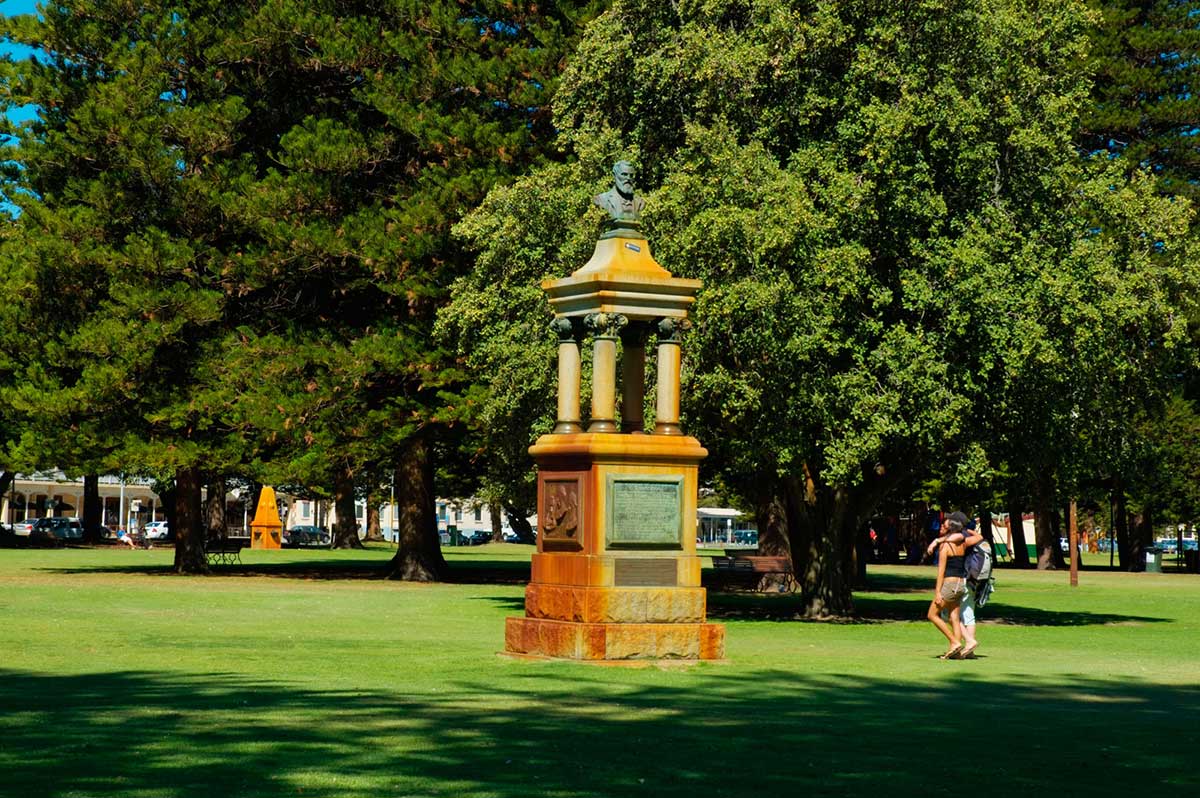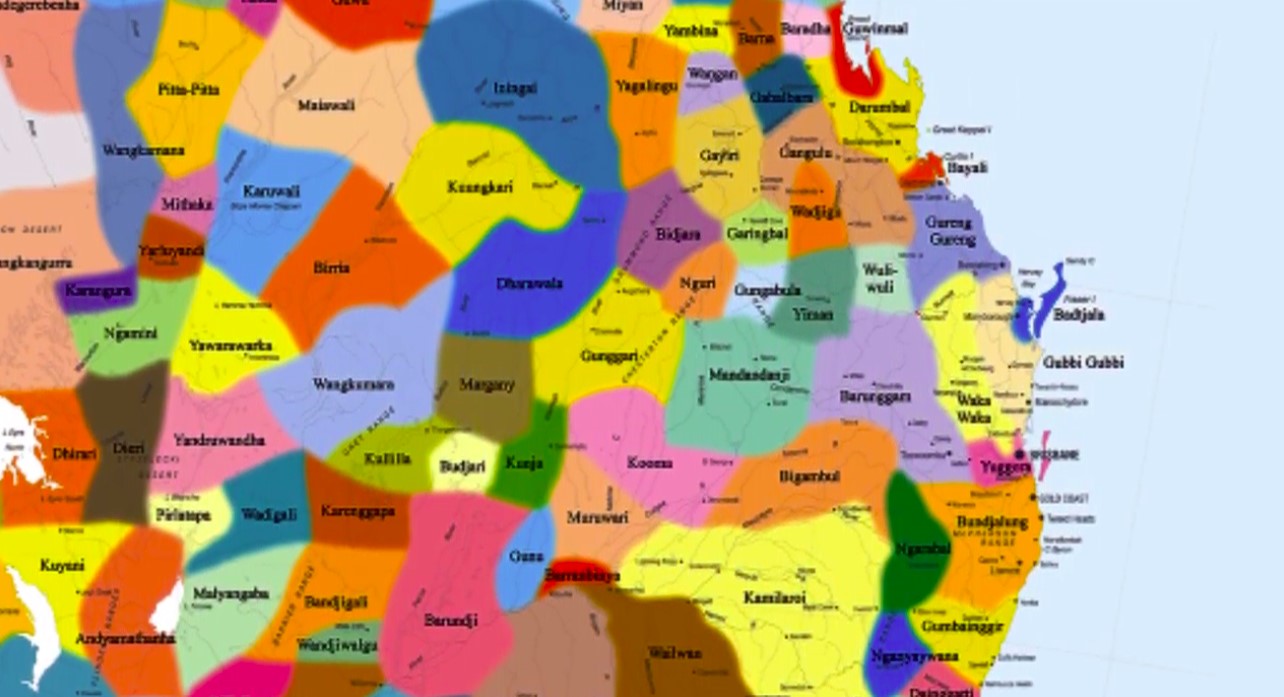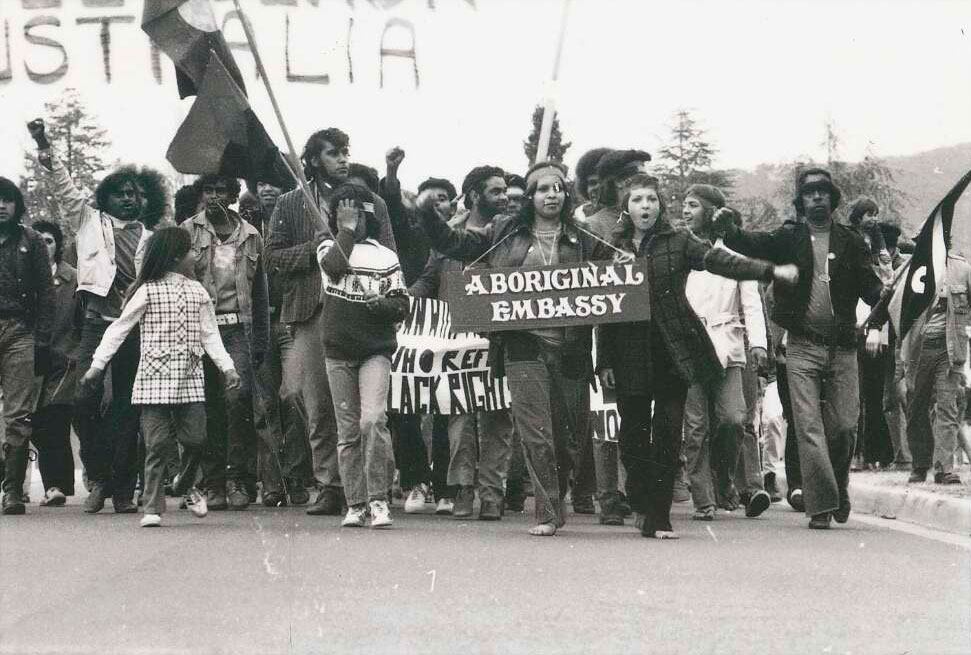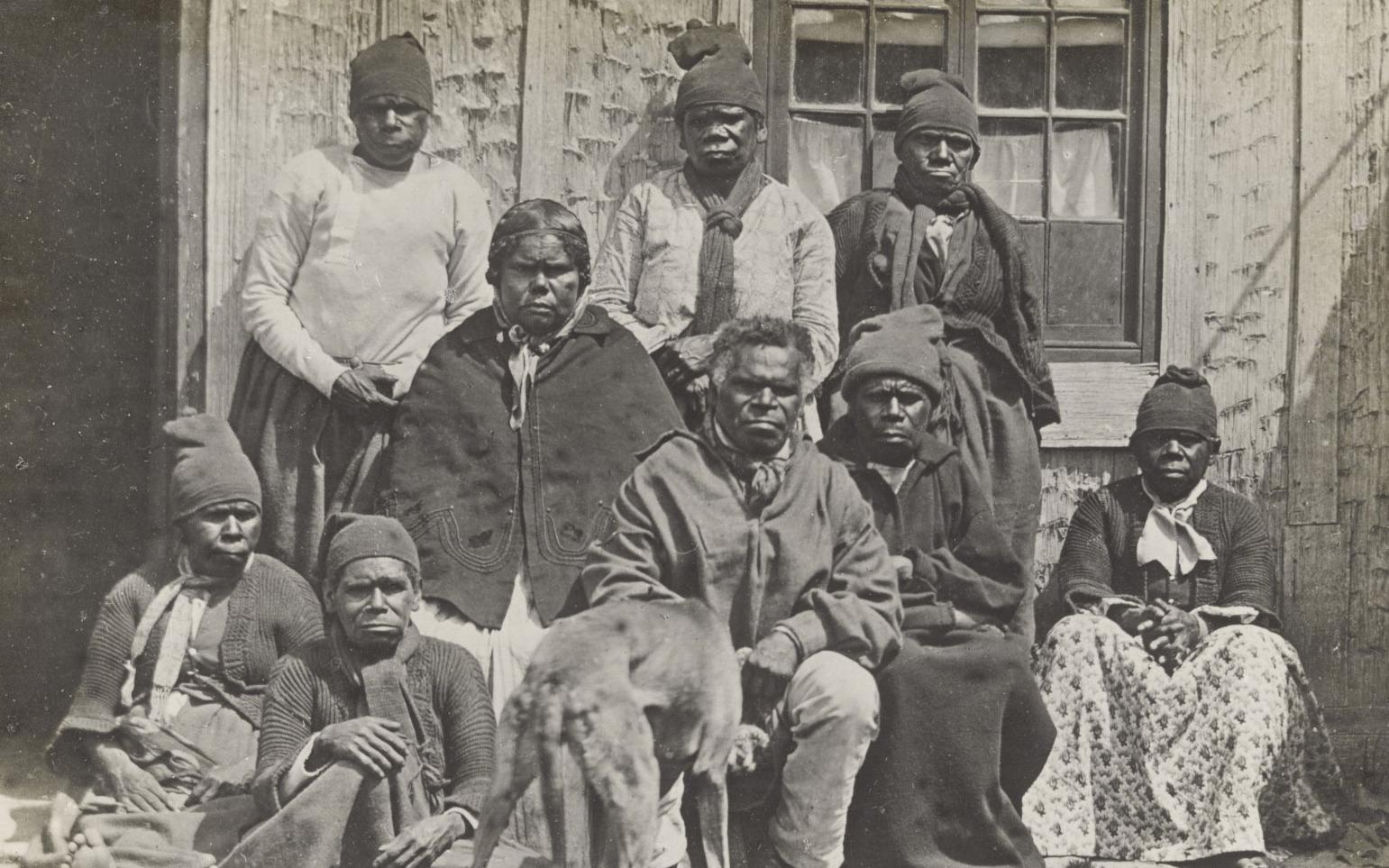‘Policing’ the frontier
1848: New South Wales law to fund Native Police
‘Policing’ the frontier
1848: New South Wales law to fund Native Police
In a snapshot
In 1848 the colony of New South Wales set up a Native Police force made up of Aboriginal troopers under European officers. The Native Police worked mainly in what is now southern Queensland to suppress Aboriginal resistance to European settlement. The Native Police continued, in one form or another, until the 1960s.
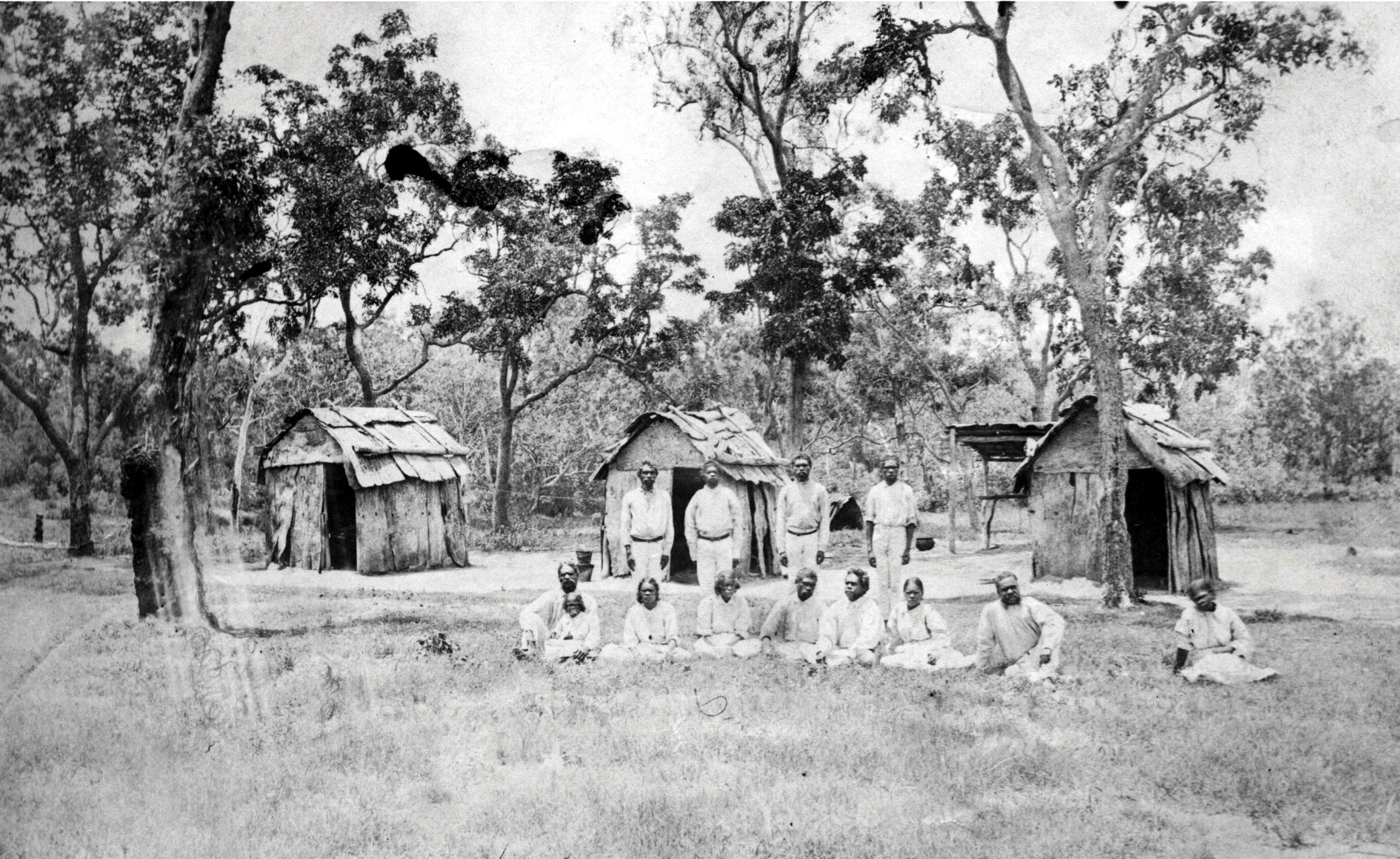
 Can you find out?
Can you find out?
1. What did the spread of European settlement mean for Aboriginal people?
2. Why were some Aboriginal people recruited for the Native Police from the 1840s?
3. From what regions were the first Native Police troopers recruited? Where were they sent to work?
What happened when European settlement spread?
Once Europeans had crossed the Blue Mountains in 1813, European settlement in Australia quickly spread outwards from Sydney. The colonial government tried to limit the spread, but this didn’t work. Squatters took their sheep and cattle to whatever new land they could find and explorers went further and further afield.
This meant that European settlement spread further onto Aboriginal land, which increased conflict between the two groups. Aboriginal people killed farm animals and sometimes settlers, and Europeans used violence to suppress Aboriginal resistance.
Officially the colonial government said it wanted harmony between Europeans and Aboriginal people. But as Europeans settled further and further away from Sydney it became more difficult to enforce laws.

How did the colony first try to control the borderlands?
By the middle of the 1830s the settlers had reached as far north as the Darling Downs (southern Queensland).
In 1836 the colonial government set up a Border Police Force. The Border Police were funded by squatters and its job was to protect both European settlers and Aboriginal people in newly settled areas.
But the Border Police were not very popular or effective. They were mostly made up of military convicts, and settlers accused them of being drunken and disorderly. The biggest problem was that there weren’t enough Border Police to protect either settlers or Aboriginal people.
In the 1830s and 1840s Aboriginal men were employed in the Border Police and the Mounted Police, who patrolled the formally settled areas to help track those who broke the law.
What happened in Queensland in the 1840s?
In the 1840s European settlement spread quickly in what is now Queensland, but was then still part of the colony of New South Wales. This brought new levels of conflict with Aboriginal people. Aboriginal groups sometimes attacked settlers but usually they raided farms and stole goods. Settlers reacted by shooting or poisoning Aboriginal people, who in turn took revenge by killing settlers.
The government wanted to protect both groups from the cycle of resistance and revenge. It thought that an Aboriginal police force would better understand, and be able to deal with, local Aboriginal opposition.
Research task
Find out where Native Police forces were used the most in colonial Australia and what their impacts were in these areas.
‘I have reason to believe that the establishment of this force will not only have the effect of checking the collisions between the white Inhabitants and the Aborigines … but I am also sanguine in the hope that it may prove one of the most efficient means of attempting to introduce more civilized habits among the native tribes.’
How were the Native Police created?
The government planned to employ Aboriginal people from far away for a new Native Police force to avoid conflict between local Aboriginal groups.
Not everyone agreed with this idea. Moreton Bay police magistrate Captain John Wickham said that the Native Police might be too harsh on local Aboriginal people. But the Governor of New South Wales, Sir Charles FitzRoy, thought that a Native Police force might help calm newly settled areas and integrate Aboriginal people into colonial society.
On 15 June 1848 the New South Wales Legislative Council approved funding for a small Native Police force which would patrol the newly settled areas in the north of the colony (now Queensland).
Research task
Research what opposition there was to the use of Native Police and how successful this opposition was.
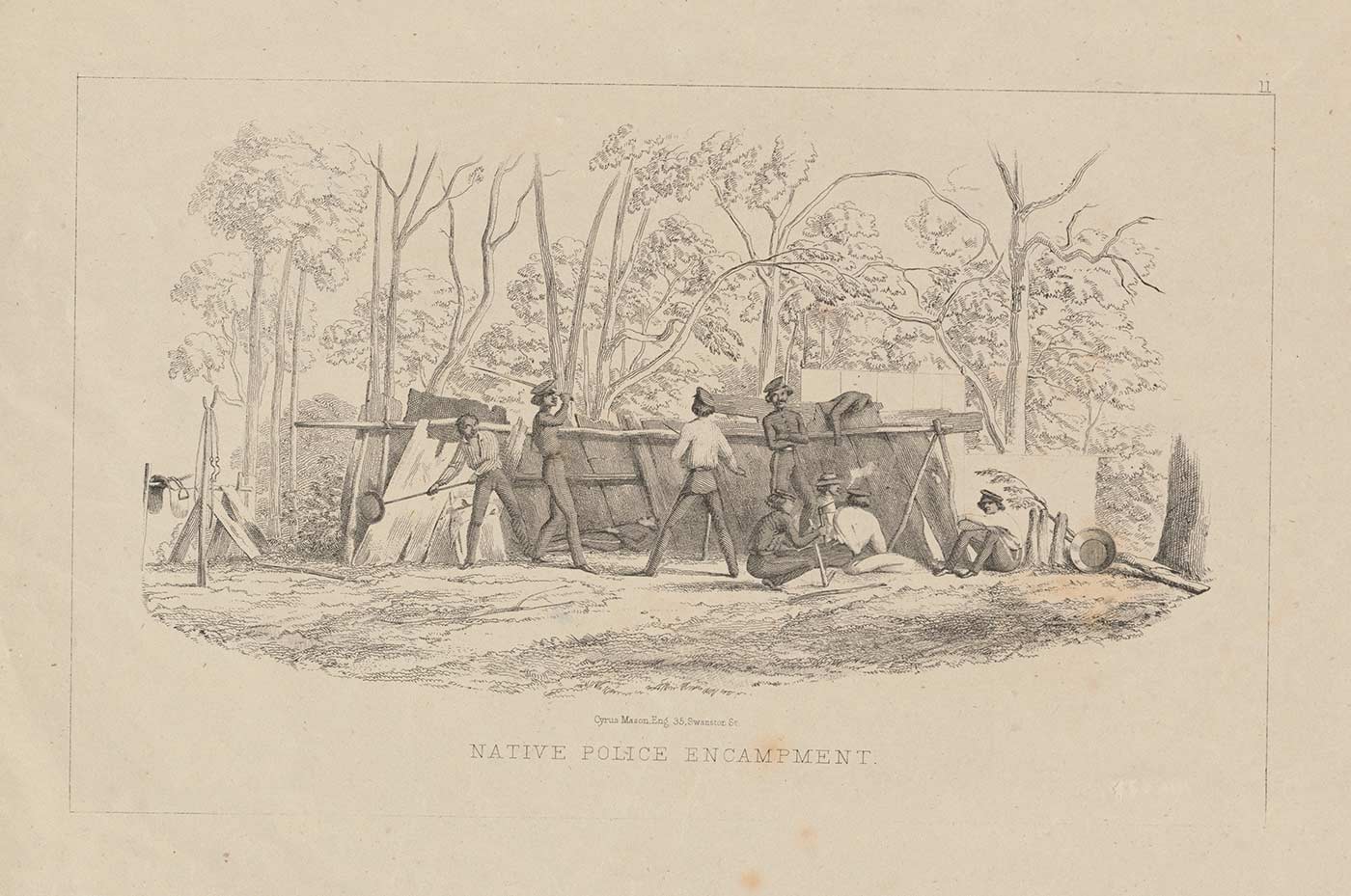
What did the Native Police do?
In August 1848, 28-year-old Frederick Walker was put in charge of the Native Police. Walker had some knowledge of Aboriginal languages and was thought to understand Aboriginal culture.
He recruited his first 14 troopers from four different Aboriginal groups in the Murrumbidgee, Murray and Edwards rivers areas of southern New South Wales. Although these men spoke four different languages Walker trained them into a unified group. By May 1849 they were in Queensland. Walker and his men began to attack Aboriginal groups that were raiding farms and stealing goods. They had much better weapons than the local Aboriginal people and they were willing to chase their opponents into remote country.
The Native Police force grew and it continued to use extremely violent methods. At times it seems the Native Police force was trying to completely destroy Aboriginal groups.
A government inquiry was launched in 1854 and Walker was sacked. But the Native Police continued, in one form or another, until the 1960s.
Read a longer version of this Defining Moment on the National Museum of Australia’s website.
 What did you learn?
What did you learn?
1. What did the spread of European settlement mean for Aboriginal people?
2. Why were some Aboriginal people recruited for the Native Police from the 1840s?
3. From what regions were the first Native Police troopers recruited? Where were they sent to work?






